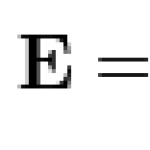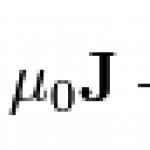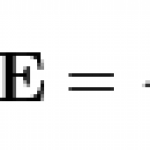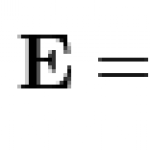Maxwell's Equations
For the first time, researchers have transformed induced pluripotent stem cells (iPSCs) into specialized bladder cells. Meanwhile the development of iPSCs from normal cells has been shown to depend on two proteins necessary for the induction of a glycolytic state. In order to make iPSCs, researchers have previously needed to collect significant amounts of skin, bone marrow, or blood from a donor, but researchers have demonstrated a new method that requires only a single drop of blood. In the future, you may be able to prick your finger, send a drop of blood to the lab, and have them…
The theory of relativity takes its name from a very simple and appealing idea: that the laws of physics should look the same to moving observers as to stationary ones. "Laws of physics" here includes Maxwell's equations for electricity and magnetism, which necessarily means that moving observers must see the same speed of light as stationary observers (Einstein included the constancy of the speed of light as a second postulate in his original relativity paper, but it's redundant-- the constancy of the speed of light is a direct consequence of the principle of relativity). This leads directly…
And God said, Let there be light: and there was light.
- Genesis 1:3
This post is going to need the standard math disclaimer. Though there's math that looks horrible, you don't actually have to know any math to follow the ideas. Give it a try!
Over this week we've looked at the four Maxwell equations that describe the entirety of classical electromagnetism. Let's write them all down:
These four are everything that it's possible to know about the classical behavior of electromagnetic fields. This notation is a little more modern than what Maxwell originally wrote down in the 1860s, but…
Fundamentally Maxwell's equations describe the origins of electric and magnetic fields. Given a set of conditions on the right hand side of the equations, you'll have fields described by the left hand side. Between the four equations the fields are uniquely specified, and there is nothing more to include. Thus far we've seen electric fields generated by electric charge, electric fields generated by changing magnetic fields, and magnetic fields not generated by magnetic charge because there isn't any. Conspicuously absent is any way to generate magnetic fields. It is this fourth equation…
So far we've seen that electric charges create electric fields. We've also seen that magnetic charges would create magnetic fields if there were any such things, but there aren't. If you're in the business of creating electric fields, as the entire electric power industry is, one way of doing so is to pile up a bunch of charge. This is a massive pain and is usually impractical to provide the EMF necessary to shove those electrons through our home electrical outlets. But since there is in fact current flowing through those wires, there must be another way to get electric fields.
There is…
In our examination of the first of Maxwell's four equations, we saw that magnetic charge doesn't exist as far as we can tell. On the other hand, electric charge permeates every aspect of our existence. The motion of charged electrons is one of the central pillars of modern civilization. The way that electric charge creates an electric field is the subject of the second of Maxwell's equations. In its full mathematical glory:
The triangle and the dot represent the divergence, exactly as in the first Maxwell equation. The letter E is the electric field. Unlike the magnetic field…
All this week we're going to be briefly looking at James Clerk Maxwell's greatest contribution to physics - his theory of electromagnetism. The consequences and applications of the theory fill many volumes, but the conceptual and mathematical foundations of the theory can be expressed as four short and relatively simple equations. These are Maxwell's equations, and though they're not as well-known in the pop culture as Einstein's mass-energy equations our modern world would be impossible without them.
The first equation describes magnetic charge:
In words, you'd say "The divergence of…





